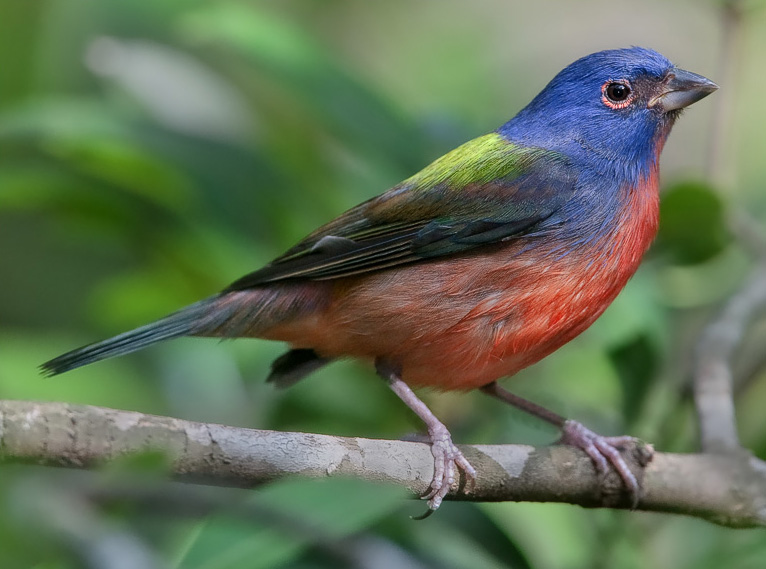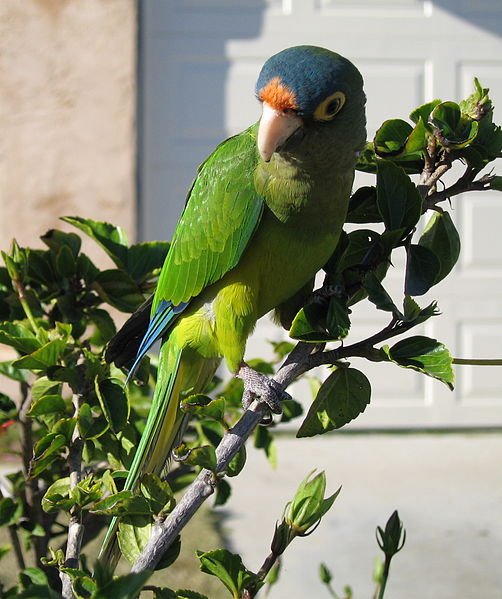Recent research on avian vision at Sweden’s Lund University has revealed that birds lose their ability to see color at twilight. These findings have inspired me to consider how we might use lighting in order to improve the health and breeding potential of captive parrots, finches, doves and other birds.
The Findings
The article, published in the Journal of Experimental Biology, points out that birds need 5-20 times the amount of light as do humans in order to see color. By day, birds have extremely sharp color vision, and see both UVB light and a far greater range of colors than do people. However, their color vision disappears at twilight – far earlier in the day than does that of any other animal studied thus far.
Light’s Effect on Captive Birds
I believe it is important that we consider the type of light we provide to our birds…the zoos in which I have worked are now experimenting with full spectrum lighting in their bird exhibits.
Poor light quality and intensity may explain the difficulties experienced in breeding otherwise hardy bird species in captivity. Light can have some unexpected implications for reproduction. Captive female desert iguanas (lizards native to Southwestern North America), for example, rarely reproduce unless given full-spectrum lighting…without UVB light, they cannot see the pheromone trails laid down by males.
Similar scenarios are likely at work where birds are concerned. Indeed, there are indications that proper levels of UVA and UVB light encourage natural behaviors, reproduction and strong immune systems in captive birds.
Providing Birds with Appropriate Light
Fortunately, a number of options are open to bird owners. Exposure to natural sunlight (bearing in mind that glass and plastic filter out UVB rays) is the best of these, but when this is not possible a high quality Full Spectrum Bird Lamp should be utilized.
Further Reading
The new findings on light intensity should be valuable in explaining certain aspects of bird evolution and behavior. For example, the chicks of Gouldian, firetail and zebra finches, all of which nest in dark tree hollows, sport light-reflecting nodules near their mouths. To read more about this survival strategy, please see my article Flashy Finch Chicks.
 That Bird Blog – Bird Care and History for Pet Birds
That Bird Blog – Bird Care and History for Pet Birds

 The region extending from New Zealand northwest through Australia to New Guinea and the islands of Indonesia is home to the world’s greatest diversity of parrots, with over one half of the known genera represented. Conservation efforts are most effective in Australia and New Zealand, but less in evidence in New Guinea and islands in the Southwest Pacific.
The region extending from New Zealand northwest through Australia to New Guinea and the islands of Indonesia is home to the world’s greatest diversity of parrots, with over one half of the known genera represented. Conservation efforts are most effective in Australia and New Zealand, but less in evidence in New Guinea and islands in the Southwest Pacific. Habitat loss and alteration is the gravest threats facing Australia’s parrots. The felling of old trees bearing suitable hollows for nesting is particularly serious, as many parrots have specific requirements as to the size, height and location of nesting hollows, and will not utilize alternatives. Especially hard hit have been Baudin’s, Carnaby’s and Mitchell’s Cockatoos, but most others are affected as well.
Habitat loss and alteration is the gravest threats facing Australia’s parrots. The felling of old trees bearing suitable hollows for nesting is particularly serious, as many parrots have specific requirements as to the size, height and location of nesting hollows, and will not utilize alternatives. Especially hard hit have been Baudin’s, Carnaby’s and Mitchell’s Cockatoos, but most others are affected as well. Two distinct populations of Painted Buntings range from North Carolina south through Florida to Cuba and other Caribbean islands and from northern Texas to Mexico.
Two distinct populations of Painted Buntings range from North Carolina south through Florida to Cuba and other Caribbean islands and from northern Texas to Mexico. The plumage of male Painted Buntings typically fades in captivity. The most brilliantly colored specimens that I have seen in zoos have been fed a diet rich in live insects, including wild caught species. The provision of natural sunlight or the use of a
The plumage of male Painted Buntings typically fades in captivity. The most brilliantly colored specimens that I have seen in zoos have been fed a diet rich in live insects, including wild caught species. The provision of natural sunlight or the use of a  Please see
Please see  Setting out bird baths within easy reach of your feeders will increase visitation, including by bird species that might not be interested in the foods you provide. For example, robins, which in most areas are earthworm specialists, will readily make use of bird baths.
Setting out bird baths within easy reach of your feeders will increase visitation, including by bird species that might not be interested in the foods you provide. For example, robins, which in most areas are earthworm specialists, will readily make use of bird baths. Last time we took a look at the unusual nesting behavior of this popular little parrot (please see The Half Moon, Orange-Fronted or Petz’s Conure and its Relationship with the Arboreal Black-Headed Termite.) But, as if breeding in termite mounds were not enough to distinguish it from other parrots, the half moon conure also changes the usual parrot “roosting rules” as well. And with good reason…
Last time we took a look at the unusual nesting behavior of this popular little parrot (please see The Half Moon, Orange-Fronted or Petz’s Conure and its Relationship with the Arboreal Black-Headed Termite.) But, as if breeding in termite mounds were not enough to distinguish it from other parrots, the half moon conure also changes the usual parrot “roosting rules” as well. And with good reason…